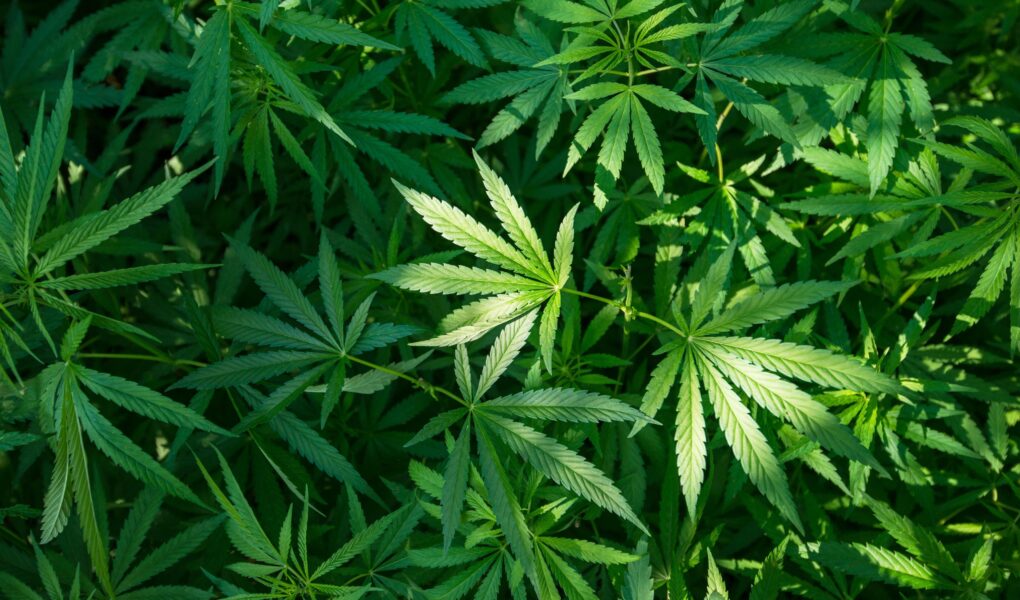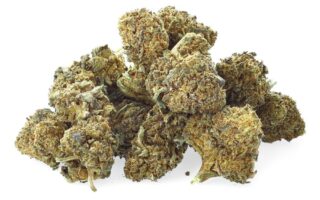In the tapestry of modern culture, few threads are as intricate and vibrant as that of marijuana. Once relegated to the shadows of controversy and stigma, the term “marijuana” has emerged into the spotlight, becoming a focal point of discussion across medical, legal, and social landscapes. But what exactly does marijuana encompass? Is it merely a plant, or does it signify a complex interplay of history, culture, and evolving perceptions? This article seeks to unravel the nuances of marijuana’s definition, exploring its botanical roots, diverse applications, and the shifting narratives that surround it. Join us as we embark on a journey to understand not just what marijuana is, but the myriad ways it is woven into the fabric of society today.
Table of Contents
- Understanding Marijuana: A Comprehensive Definition and Its Variants
- The Chemical Composition of Marijuana: Key Cannabinoids and Their Effects
- Cultural Perspectives on Marijuana: Historical Context and Modern Implications
- Navigating Legal Landscapes: Recommendations for Responsible Use and Awareness
- Q&A
- Wrapping Up
Understanding Marijuana: A Comprehensive Definition and Its Variants
Marijuana, scientifically known as Cannabis sativa, is a versatile plant that holds significant cultural, medicinal, and recreational value across the globe. Characterized by its psychoactive properties, marijuana primarily contains the compounds tetrahydrocannabinol (THC) and cannabidiol (CBD), which contribute to its mind-altering effects and therapeutic benefits, respectively. The plant thrives in various environments and can be cultivated in numerous ways, leading to a rich diversity of strains that cater to the needs of different users. Among its most recognized forms are:
- Indica – Typically known for its calming effects, ideal for relaxation and pain relief.
- Sativa – Generally associated with energizing and uplifting effects, often used for daytime consumption.
- Hybrid – A blend of both Indica and Sativa strains, tailored to provide a balanced experience.
Beyond the basic distinctions of these strains, marijuana can also be categorized by its intended use and preparation methods, including:
| Form | Description |
|---|---|
| Flower | Raw buds for smoking or vaporizing. |
| Edibles | Food products infused with cannabis extracts. |
| Concentrates | Highly potent extracts used for dabbing or mixing. |
| Topicals | Lotions or balms infused with cannabis for localized relief. |
The Chemical Composition of Marijuana: Key Cannabinoids and Their Effects
The chemical composition of marijuana is primarily defined by its cannabinoids, which are the active compounds that interact with the body’s endocannabinoid system to produce a range of effects. Among the over 100 identified cannabinoids, a few stand out due to their prevalence and pronounced effects in both recreational and medicinal contexts. The most notable include:
- Delta-9-tetrahydrocannabinol (THC): The most recognized cannabinoid, known for its psychoactive properties and ability to induce feelings of euphoria.
- cannabidiol ( CBD): Non-psychoactive and praised for its potential therapeutic benefits, including anti-inflammatory and anxiolytic effects.
- Cannabinol (CBN): Produces mild sedative effects and has shown promise in addressing sleep disorders.
In addition to cannabinoids, marijuana contains various terpenes and flavonoids that contribute to its aroma and flavor, enhancing the overall experience. These compounds also play a role in the plant’s entourage effect, where the combination of cannabinoids and terpenes works synergistically to amplify therapeutic benefits. A brief overview of some key terpenes includes:
| Terpene | Potential Effects |
|---|---|
| Myrcene | Relaxant, sedative effects |
| Limonene | Elevates mood, stress relief |
| Pinene | Anti-inflammatory, promotes alertness |
Cultural Perspectives on Marijuana: Historical Context and Modern Implications
The perception of marijuana has evolved dramatically throughout history, influenced by various cultural, social, and political factors. Initially revered in many ancient cultures for its medicinal properties, cannabis has been part of traditional practices since the dawn of civilization. For instance, ancient Chinese texts from around 2737 BCE reference its use in herbal medicine, while Indian cultures celebrated its psychoactive abilities, considering it a sacred plant linked to religious rituals. As societies progressed, marijuana faced stigmatization and was often associated with marginalized groups, leading to widespread regulation and criminalization, particularly in the 20th century in Western nations.
In contemporary times, we witness a resurgence of interest in marijuana, accompanied by a reexamination of its role in society. The modern implications of this shift reflect a growing acceptance of cannabis, moving from taboo to trendy. This transition is highlighted by the increasing legalization efforts across various countries and states, which has spurred conversation about its use in recreational and medicinal contexts. Notably, the evolving dialogue encapsulates diverse cultural perspectives, revealing a spectrum of beliefs about its benefits and risks, and prompting discussions about health, safety, and ethical consumption.
Navigating Legal Landscapes: Recommendations for Responsible Use and Awareness
As the legal framework surrounding marijuana continues to evolve, it is vital for users, caregivers, and advocates to stay informed and compliant with local laws. Understanding the regulations governing marijuana usage can mitigate legal risks and foster a safer environment for personal use or medical application. Here are key considerations to keep in mind:
- Know Your Jurisdiction: Familiarize yourself with state and federal laws that apply in your area, as they can vary significantly.
- Check Eligibility: If seeking medical marijuana, ensure you meet the criteria set forth by your health authority.
- Understand Possession Limits: Be aware of the amount you are legally allowed to possess, as exceeding these limits can lead to legal repercussions.
- Stay Informed on Changes: Regularly review updates to marijuana legislation, as laws can change rapidly.
Engaging in responsible consumption not only safeguards individual users but also supports the broader community in advocating for more coherent legal standards. Educational initiatives can help bridges gaps in understanding, allowing both users and non-users to develop respect for the evolving landscape. Consider the following strategies to promote awareness and responsibility:
| Strategy | Description |
|---|---|
| Community Workshops | Organize sessions to discuss laws, usage, and safety tips. |
| Online Resources | Utilize websites and forums dedicated to legal updates and safe practices. |
| Collaborate with Experts | Partner with legal professionals and health experts to disseminate accurate information. |
Q&A
Q&A: Understanding Marijuana’s Definition
Q: What exactly is marijuana?
A: Marijuana refers to the dried flowers and leaves of the Cannabis sativa plant. It is known for its psychoactive properties, primarily attributed to the compound tetrahydrocannabinol (THC). In essence, marijuana encompasses various forms of cannabis used for recreational, medicinal, and industrial purposes.
Q: Is marijuana the same as cannabis?
A: While the terms are often used interchangeably, they aren’t identical. Cannabis is the broader botanical term that includes different species and varieties of the plant, including Cannabis sativa, Cannabis indica, and Cannabis ruderalis. Marijuana typically refers to the parts of the cannabis plant that are used for their psychoactive effects or medicinal benefits.
Q: What are the common ways marijuana is consumed?
A: Marijuana can be consumed through various methods. The most popular include smoking (joints, blunts, or pipes), vaping, consuming edibles (infused foods or drinks), and using oils or tinctures. Each method can produce different effects and intensities based on the compound concentrations and the consumption rate.
Q: Why do people use marijuana?
A: People use marijuana for a myriad of reasons. Some seek its psychoactive effects for recreational purposes, enjoying the feelings of relaxation or euphoria it can provide. Others utilize it medicinally, finding relief from various ailments such as chronic pain, anxiety, or nausea. Research continues to explore the therapeutic potential of marijuana in treating numerous health conditions.
Q: Is marijuana legal everywhere?
A: The legality of marijuana varies significantly around the world and even within countries. Some places have fully legalized its use for both recreational and medicinal purposes, while others maintain strict prohibitions. It is vital for users to be aware of local laws before using or possessing marijuana.
Q: What is the difference between marijuana and hemp?
A: Hemp is also derived from the Cannabis plant but is distinguished by its low THC content (typically less than 0.3%). Unlike marijuana, hemp is often used for industrial purposes, producing items like textiles, paper, and biofuels, as well as CBD products. The defining characteristic lies in their chemical compositions and intended uses.
Q: What are the potential risks of marijuana use?
A: While many users report positive experiences, marijuana does carry potential risks. It can lead to impaired cognitive function, especially in novice users or heavy consumption. Additionally, the effects can vary greatly among individuals, leading to anxiety or paranoia in some cases. Long-term use has also been linked to addiction in certain individuals.
Q: How is marijuana viewed culturally?
A: Culturally, marijuana’s perception has shifted dramatically over the years. Once stigmatized and associated with counterculture movements, it is now increasingly recognized in mainstream society, especially as more regions legalize its use. This transformation has sparked conversations about its benefits, drawbacks, and role in modern life.
Q: What’s the future of marijuana?
A: The future of marijuana is poised for continued evolution as more research emerges and legalization spreads. Discussions around regulation, quality control, and public health will shape the landscape, creating opportunities for both medical advancements and economic growth within the cannabis industry. As society adapts, our understanding of this plant will deepen, reflecting its multifaceted nature.
Wrapping Up
understanding the definition of marijuana opens the door to a deeper appreciation of its complex role in society, medicine, and culture. As we navigate the shifting landscapes of legislation and social acceptance, it becomes increasingly important to approach this topic with nuance and informed perspective. Whether viewed through the lens of historical significance, legal frameworks, or medicinal potential, marijuana remains a multifaceted subject that continues to evolve. By fostering informed discussions and embracing accurate definitions, we can collectively demystify this plant and its myriad implications for our lives and communities. As we move forward, let us remain curious, respectful, and open to the dialogue surrounding marijuana, recognizing its significance in a world that constantly seeks balance and understanding.



